Tasty and clean water is a healthy product. City dwellers can get it only by buying bottled water in a store or by installing a special water filter. An artesian well, the depth of which can reach up to 250-300 meters, is the optimal solution for owners of country houses. Such water is considered the best source of fluid.

What is this artesian water: the origin of the liquid
Artesian water is a liquid that formed in ancient times several hundred thousand years ago. It lies in very deep layers of the earth. The composition and the map of water resources you can learn about the process of formation of water on our planet.

Groundwater is a common resource that humankind actively uses in the course of its vital activity. They lie shallow. Depending on the classification, this is the second or third level of the aquifers. This fluid is actively involved in the circulation of water in nature, therefore, is particularly strongly subject to seasonal fluctuations in the level. This problem is especially acute in the dry season.
Rainwater seeps into the groundwater, which is partially filtered, passing through the rocks, partly bringing harmful substances and compounds that dissolve in water. A ground moisture around industrial facilities contributes to the gradual expansion of the set of chemical elements in the water. These are nitrates, heavy metals, radioactive substances, domestic wastewater and refined products.
In places remote from cities and industrial facilities, groundwater retains an acceptable level of cleanliness, but pollution can still enter them along with precipitation. In this aspect, artesian water unconditionally leads in the ranking of purity and quality.
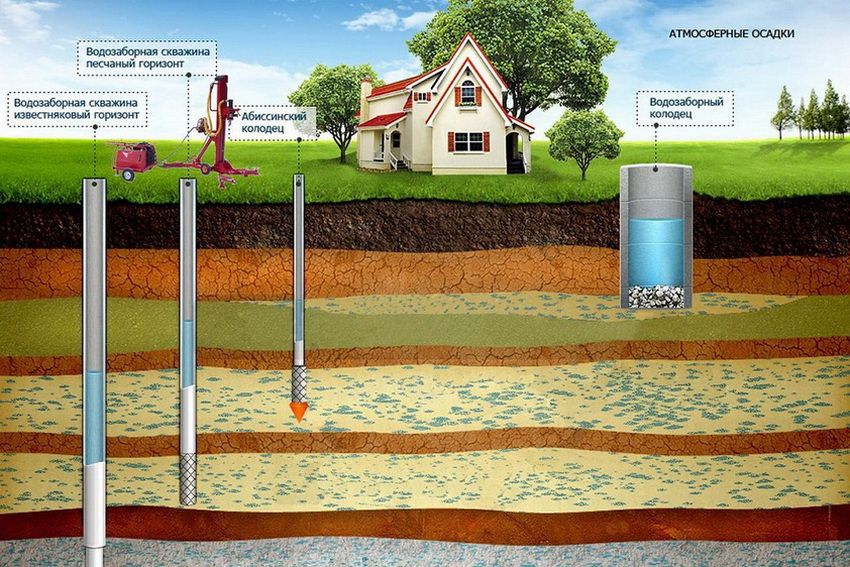
People say that water from an artesian well is the most delicious and useful in comparison with a liquid from an ordinary well or a sandy well. This publication will help to clarify the question of what a well is, and whether or not water from it is so useful.
Wells are different. Drilling to a depth of less than 30 meters is not a way to get artesian water.
An artesian well is a drill well whose main purpose is to use groundwater from artesian aquifers. According to the scientific definition, an artesian well is called a well whose depth is more than 100 m, although in some areas drilling to a depth of 250-300 m is necessary.
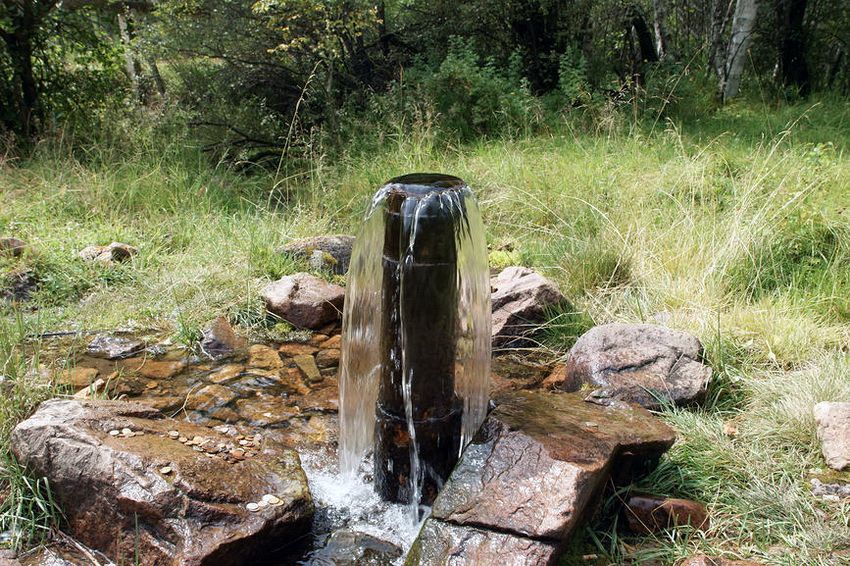
Moreover, the depth in this case is not the most important indicator. After all, the main value of the artesian fluid lies in the exceptional purity of the water, since its veins lie between two impermeable layers that protect the liquid from any contamination.
Most often, specialists are asked the question of how deep artesian water is located. To get to this object, you may need to drill from 20 to 1000 m. On average, an aquifer with a depth of up to 100 m is punched in the territory of the Russian Federation. But the process of drilling artesian wells is a difficult and costly task from a financial point of view. Therefore, before deciding on the extraction of this useful water, first of all you need to weigh the pros and cons.
Helpful advice! In Russia, the extraction of groundwater is allowed only after obtaining permission to use the Earth’s subsoil in a certain area. This is regulated by Article 10 p. 4 of the Law of the Russian Federation “On Subsoil”. A special commission that issues a license for an artesian well is also guided by SanPiN 2.1.4.1110-02.

Artesian well is considered the best source of water from all existing. And not in vain, because this source has a number of significant advantages in comparison with other aquifers, namely:
- high well productivity. Limestone is characterized by high water loss, which is 1-3 cubic meters per hour. During the operation of a conventional groundwater well, it is possible to extract water from 300 to 1000 liters per hour, which is sufficient to provide a small cottage with liquid (for a family of three). Artesian water sources are capable of producing more than 150 liters per minute. This well can produce a very large amount of water, which allows the garden community or the microdistrict of the city to be supplied with liquid;
- continuous water supply. It is possible to place an artesian well anywhere, while the water pressure will be constantly produced under high pressure. The pump operation time does not affect the pressure: even after three hours of work, the water loss will be equally powerful. If the capacity is 3 cubic meters per hour, then it is allowed to work simultaneously from 3 to 5 points of water intake. At the same time in any of them the pressure will be excellent. If it is a simple artesian well, the pump will be able to fully feed no more than two points of water consumption. If the need for liquid increases, the water from the taps will flow in a thin stream;
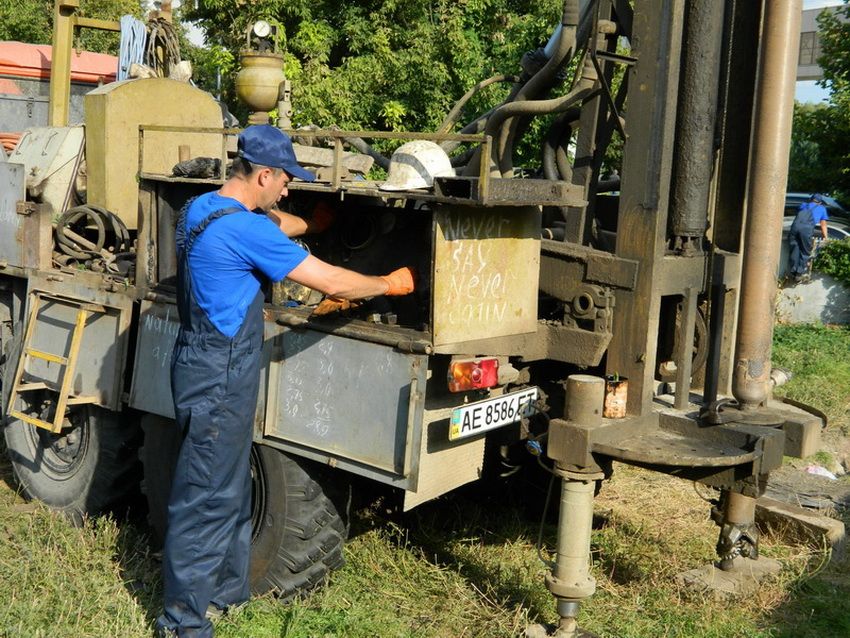
- works great regardless of the time of year. The use of artesian water wells is especially important for regions with a long low-temperature period. This is because, due to the deep location of the water horizons, stable and high performance of the water supply is maintained. This is not seen in the work of traditional sand wells. In addition, such a source of water never dries out, does not depend on weather conditions and rainfall;
- abundant aquifer. If a couple dozen water supply facilities are punched on a single aquifer, the water productivity decreases. And in the case of the development of a career or the construction of a huge object, the working capacity of sand wells may cease altogether. The operation of an artesian well, any such actions have absolutely no effect;

- water quality. Artesian water is a liquid that is protected from ingress of chemical components from the external environment, free from microorganisms and pathogens of various diseases. This water is purified by a natural soil filter. In addition, the saturation of minerals such a liquid is much higher than that extracted from soil formations. Also, water from an artesian source is characterized by a high percentage of iron and hardness salts – based on calcium, magnesium and other macronutrients.
Helpful advice! The life of an artesian well is 45-50 years for sources with a depth of about 100 m. For shallow veins, this value decreases to 25-30 years, but under the condition of continuous operation. The source is not silted up, which means that the equipment works without interruptions, and repair of an artesian well will not take 5-10 years.
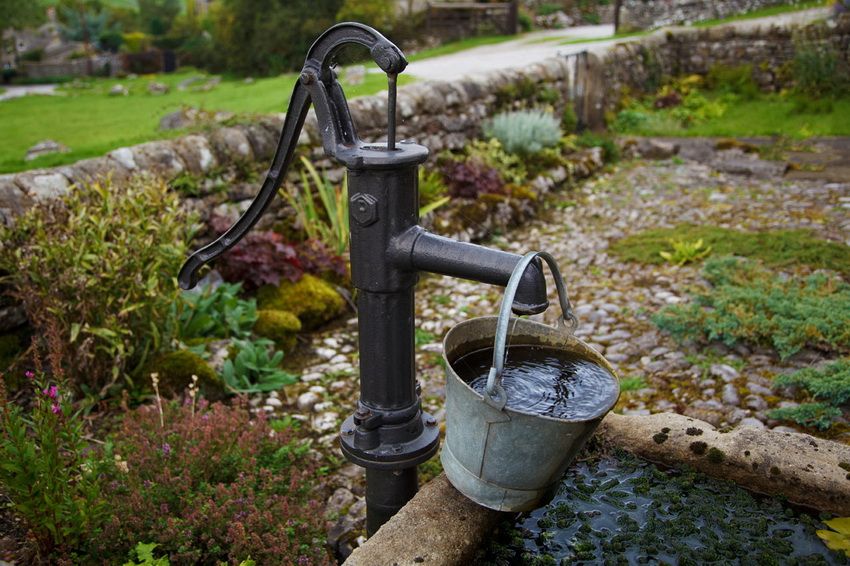
Disadvantages device artesian wells
- Price artesian well. This water supply facility is definitely more expensive than any water well or well. At the same time, the formation of the cost of drilling is influenced by the following factors: season (in winter, drilling will be cheaper), applied drilling technology, price of pumping equipment, caisson, automation. Separately, the cost of services burschikov.
- The need to install water purification structures. High iron content is a key shortage of water extracted from an artesian well. This component cannot be seen with the naked eye, since iron in a bivalent state is not visible. So, the water raised to the top will be crystal clear and transparent. However, after some time, after interaction with air, the iron passes into the trivalent phase and precipitates as a precipitate. It is this sediment that accumulates in kettles, on heating elements of boilers and other heating elements. Given this factor, during the arrangement of the artesian well it is necessary to install the cleaning system. The installation of this equipment is carried out only after the analysis of water, which will allow to determine the amount of iron in the liquid.
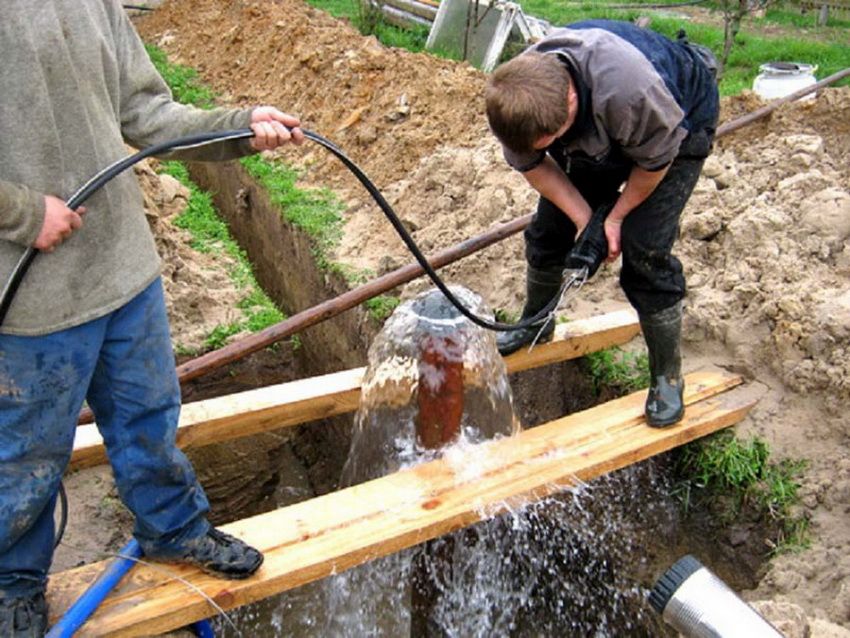
There are no organic components in artesian water, but this does not mean that water is absolutely harmless. The list and concentration of chemical elements can be much higher than in the ground fluid. Indeed, at whatever depth the source is located, the water in it continues to be saturated with various chemicals. Depending on the characteristics of the layers, between which there is artesian water, the fluid can be fresh, mineral or concentrated. And water with such components may not be suitable for human consumption.
Experts do not recommend the use of salt water from an artesian source for irrigation of agricultural land due to fear of salting the soil. This may cause it to be unsuitable for plowing. Groundwater is more suitable for this, but more often it contains causative agents of serious diseases, such as E. coli or cholera vibrio.
In addition, chemical analysis shows that very often the amount of nitrates in groundwater is several times higher than all permissible norms. Adults are less susceptible to such water, but in the case of poisoning of small children, even fatal outcomes are possible.

The peculiarities of deep artesian water occurrence provide not only a high level of purity, but also an increased concentration of iron, calcium, magnesium and fluorine. If the composition and concentration of substances do not meet the permissible standards, the artesian water is subjected to additional purification to normalize the chemical composition.
- periodically check the filters and replace them if necessary;
- at least once a year to do a water analysis, and in case of a change in the composition, the treatment plant should be optimized;
- under no circumstances should you try to solve any problems that arise yourself – it is better to immediately contact the appropriate service;
- immediately call a specialist if the water pressure has decreased.
Despite the fact that the drilling of artesian wells is a process that requires long preparatory activities and significant financial costs, the result will be worth it. Artesian water is distinguished by its unique composition and purity, which benefits human health. The only downside to drilling is the cost of the process.

